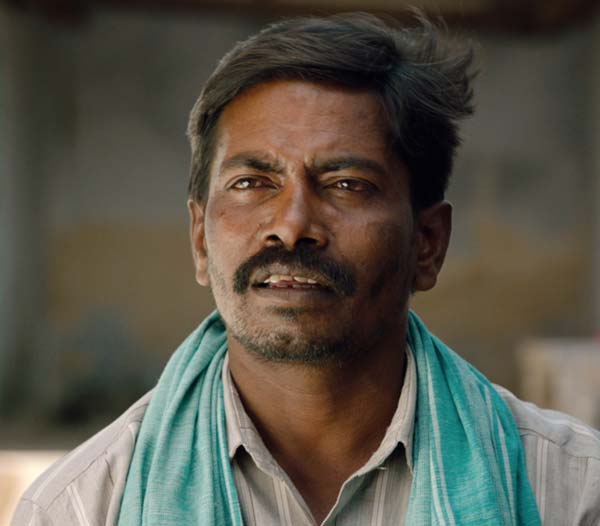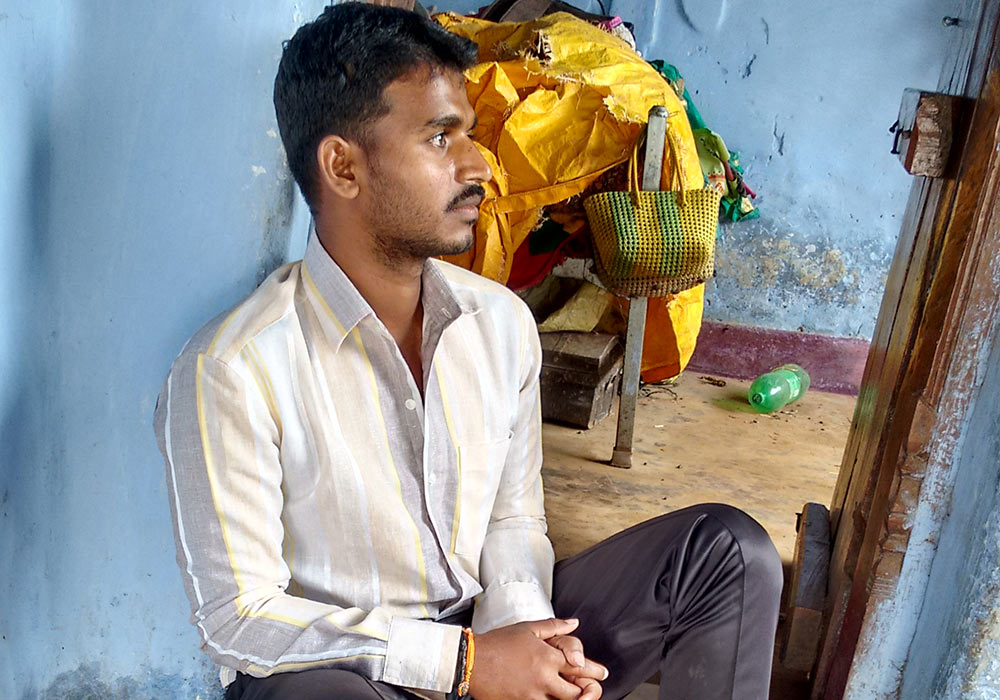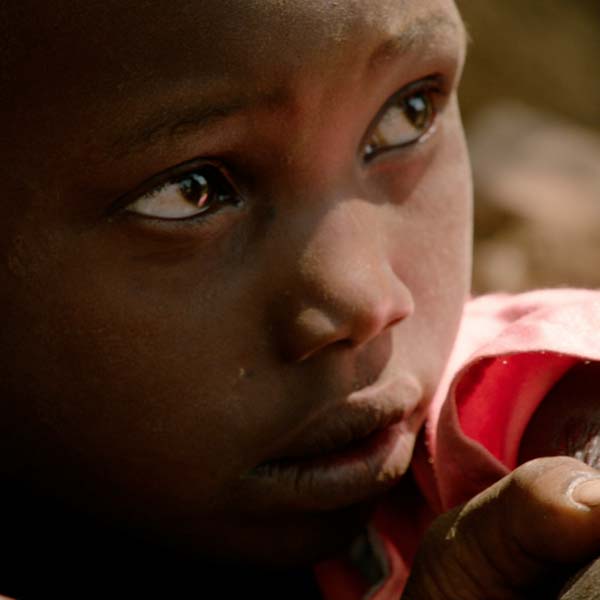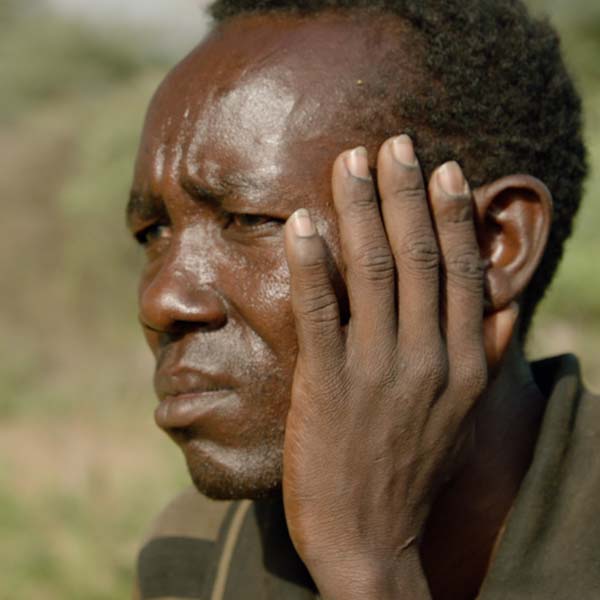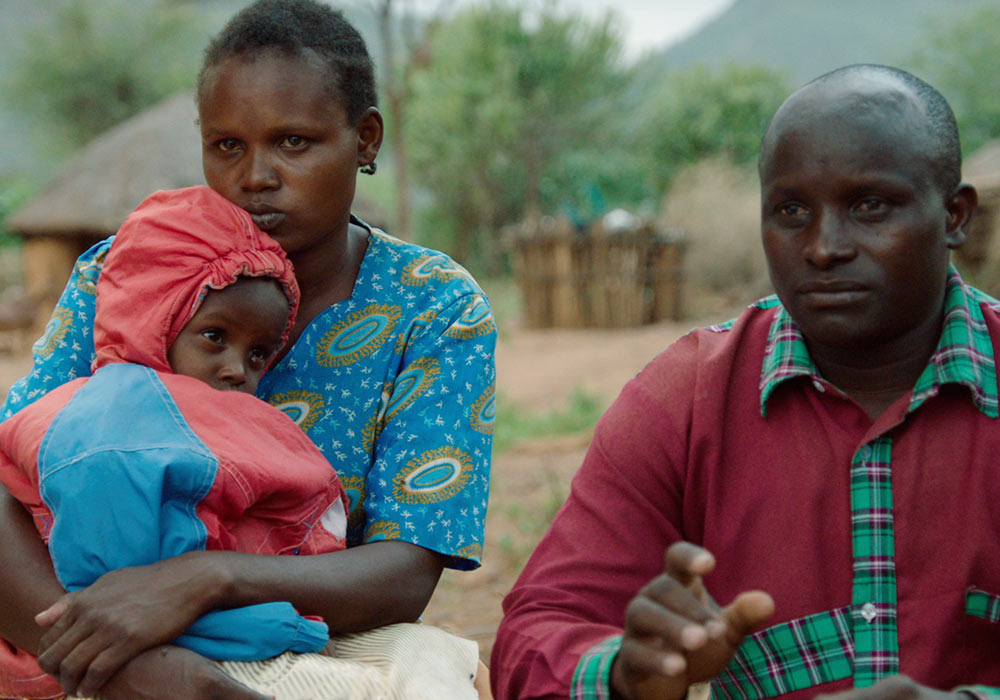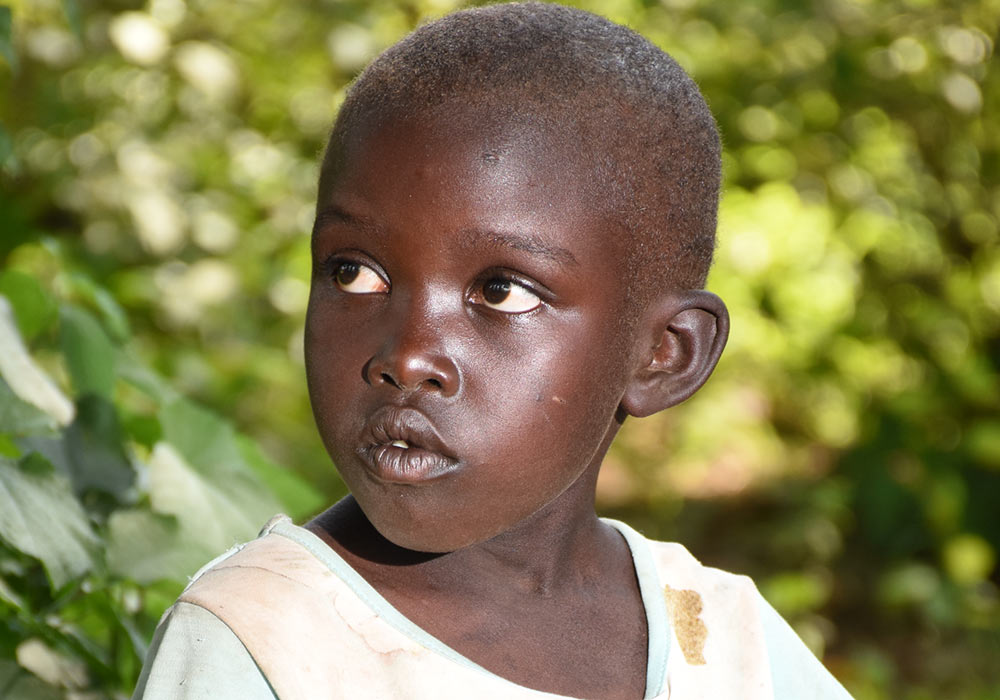Snakebite Victims
Snakebite victims don’t live in big cities, but in semi-rural to remote villages. They are farmers, children and homemakers going about the struggles of surviving daily life in locales described simply as ‘raw mother earth’. In reality, city dwellers typically have no idea the people growing their food are living amongst a crisis. Living in remote areas makes getting to treatment difficult. When a victim finally does reach a hospital, many times antivenom isn’t available. A shuffle from hospital to hospital is common. Treatments lead to debt and selling off anything of value.
Coconut Famer
Late 30's
Russell's Viper
Erode, India
Selvarasu
Our first visit with Selvarasu made it clear we were meeting a man who has done everything to make life work for his family. Underneath the once proud farmer’s façade was a victim suffering on many levels. During our interview, Selvarasu broke into tears, which in turn brought tears to the filming crew. Recounting his struggles since a fateful night in 2012 is enough to make the strongest of souls break down.
Selvarasu was once one heck of a farmer, inching up his tall trees at rapid speed to pluck an abundant crop of coconuts. On descent, Selvarasu would gather his gems, dragging them by sacks to his porch where he’d prep everything for sale. Life was good for this provider. While tending to his fields one night, a violent strike from a Russell’s viper sent him on a hospital scavenger hunt of sorts. First, a government hospital had no stock of antivenom and physicians claimed Selvarasu was near death. Not having it, the family journeyed to a private facility where 35 vials of antvenom were administered over twelve hours. When the family was told Selvarasu may only have six to eight hours more to live, the fastest ambulance driver drove him to the hospital that would save his life – a seven hour drive, made in five hours.
Although his leg tissue had rotted, doctors avoided amputation, but many years of wound care would be needed. Loans to cover both hospital and transport costs left Selvarasu with nothing. Leaving the hospital early was his only option. Selvarasu would become his own doctor, cleaning and dressing his own wound, a daily ritual he continues to take seriously five years after the bite. But his climbing career was over.
The Ripple Effect: Selvarasu earns less income because he now pays someone else to climb his trees. Coupled with the debt incurred from treatment, his wife has turned to shelling peanuts for extra income. His three children watch their struggling father open notices from school officials asking for past due fees. Selling off what few remaining possessions is the only option to keep food on the table, and the children in school.
Baker of desserts
26
Russell's Viper
Krishnagiri, India
Periyasamy
Our crew spent the better part of three days filming at a hospital in southern India specializing in snakebite cases. Satisfied with the footage we had acquired, the crew returned to their hotel to pack gear, ready to return to the states. And then the phone rang. A bite victim was on his way from a nearby village, having been bitten by a Russell’s viper on his dark walk home from work.
Periyasamy arrived at TCR Multispecialty Hospital, along with a flurry of relatives toting the dead snake. Immediately, doctors began administering ten vials of antivenom to this alert and healthy young man. Within minutes, he went into what likely was anaphylactic shock, sometimes the case with Indian antivenoms. Staff quickly put Periysamy on a ventilator to protect his airways and assist with breathing, a common practice for fast-acting neurotoxins associated with Russell’s viper venom. He remained sedated long after we departed, being released after ten days and a bill of more than $1,500 U.S. Return visits would be mandatory.
The Ripple Effect: Six months after Periyasamy’s release, we asked Manoj, one of the doctors who treated him to check on his well being. The photos we received showed a smiling and healthy looking Periyasamy – erasing the last image we had of him full of breathing tubes. Psychologically speaking, Periyasamy was not well. He had yet to return to his job as a baker, fearing the walk along local roads would expose him to perhaps another encounter with a snake. His wife, crippled since childhood from polio isn’t able to work. Making a dent into his treatment debt may take years to tackle.
7
Cobra
Tanyisas, Kenya
Chepkomen
A lengthy hike deep into the steep and remote Kenyan hill country lead us to seven year old Chepkomen. The trek alone proved strenuous for our able bodied team and painted the picture of what the family endured to seek treatment for their daughter. And not just one bite, but two, both on each hand, a little more than a year apart and before this little girl had even turned six. Each bite saw one parent running with Chepkomen on their back for several rocky kilometers, while the other ran ahead to flag down a passing motorist.
The second bite happened while Chepkomen was standing around the fire as her mother cooked the evening meal. By the time they reached hospital, her head and chest were swollen. Chepkomen remained in the hospital ward for four months, receiving extensive skin grafting to her left hand. After the operation, her hand contracted backwards and is deformed to this day. When we visited, her resilience shown bright, playing with rocks and sticks with her siblings as if these two traumatic events never happened. How she will cope as she grows older can’t be known.
The Ripple Effect: Economically, Chepkomen’s family was crippled. With treatment costs totaling $1,300 U.S., her dollar-a-day earning father sold his entire herd of goats. Today, he has no real source of income, only occasionally selling charcoal. When we parted, Chepkomen’s dad still had many hundreds of dollars of loans to pay back to kind neighbors who chipped in during treatment.
Former Herder
Mid 30's
Unknown
Tiaty subcounty, Kenya
Kases
Kases lived in the remotest of villages of any victim we encountered in any country we visited. His story is much the same. A bite, many years ago while herding his goats, goats sold, no income to pay for continued treatment. Had Kases had the money to become whole again, it wouldn’t have mattered. He lost faith in the medical system and believes snakebite victims aren’t on the radar of his government at any level. Adding to his beliefs, walking three hours through Kenyan scrub brush was unbearable and out of the question.
One the day we arrived and met Kases, his ankle wound was clearly infected, unlike anything we had seen. He wasn’t feeling well as he stood with the aid of a walking stick, sadly gazing on at a neighbor herding his goats. That was once his job. We’ll never forget one thing he said to us over and over. “If the government was concerned with us, my leg would be healed by now. If you’re bitten in the valley or in the forest, you must scream at the top of your voice if you want to be saved, or you will suffer.” His despair weighed on us all night.
The Ripple Effect: Two days later our crew was able to get Kases all the way back to Kabarnet hospital to have his wound checked. The physician on duty agreed. Kases was suffering from septicemia. A serious infection, with chronic ulceration. Had he not been brought to hospital, the doctor was convinced Kases would have succumbed to his wound. The story from here would breach patient privacy. We do know Kases was treated in the hospital for 49 days with hopes of getting a skin graft. We last heard he became impatient and returned to his village to be with his family. And that’s the last that we know.
Both sisters under 5
Cobra
Emsos, Kenya
The Kiplagat Family
Quietly sleeping in the same raised bed in their tin-sided home with an open front door. That was all two young sisters were doing. Quiet, until mother Eunice heard her eldest cry loudly. Any parent knows that feeling. A bad nightmare, perhaps an oncoming fever or sickness. Eunice held and consoled her inconsolable child, when seconds later, screams echoed from that same bedroom. Both parents ran in to console Jepchirchir who was trying to say she had a pain in her hand. Immediately, Jackson, the father had a fear come over him. After grabbing a flashlight he carefully looked under the bed to discover the culprit: a cobra, somewhat coiled up in the corner. As Jackson raced to reach a neighbor to arrange motorbike transport to a hospital, the first child, still in her mother’s arms stopped screaming. Her body went limp.
Jepchirchir was rushed by motorbike to a hospital 60 kilometers away. Antivenom was unavailable. The panic continued as they traveled to a second and finally a third hospital, some four hours away. The venom had begun killing tissue and destroying organs. Several months later little Jepchirchir was back home. A deformed hand, blindness, the inability to walk and speak became the new way of life. Dealing with one child receiving lengthy treatment, while another was in the mortuary, was a pain Jackson says can’t be described.
The Ripple Effect: The costs of the two incidents continue to paralyze Jackson and Eunice. At the time of filming, Jackson was trying to get back to work. Jepchirchir requires around the clock care.
6
Unknown
Kamket
On our first day of filming, the wailing coming from the youth ward at Baringo Counties Kabarnet Hospital was overwhelming. Young Kamket had returned for her biweekly series of wound cleanings, which would hopefully lead to a successful skin graft. We learned very little about her on that day, short of the memories of a graphic open wound to her right leg and the tears streaming down her scared face. While we continued filming in another ward, we would never see her again, but after months passed and we had returned to begin production, we kept seeing Kamket on our monitors and always wondered. We had to know
It took moving mountains and our wonderful team of Kenyan production assistants and hospital staff to track her down. It was a Monday morning as we anxiously sat in our northern California office waiting for word. Late in the day our Skype rang. A smiling Benta in all her giddiness proclaimed the mission was successful and she’d stay up all night to upload photos. Little Kamket and her mother it turns out are nomadic, living several hours into the wilds of nowhere. They move around to different villages, which made for a long day of chasing leads and villagers pointing “no go this way or that way”. The family was overjoyed with the feeling that someone cared enough to see how she was. Kamket is thrilled to be back home with friends, but unable to run and play at the same level before the bite. The skin graft was a success. A rare story of a dedicated mother traveling for hours to seek follow-up. A poster child story for snakebite victims if there ever was one.
If you do just one thing today
Give a voice to the voiceless
Those who live with the daily consequences of snakebite would be grateful if they knew people oceans away cared enough to change their lives. Right now, they think no one is listening.
Be their voice.

